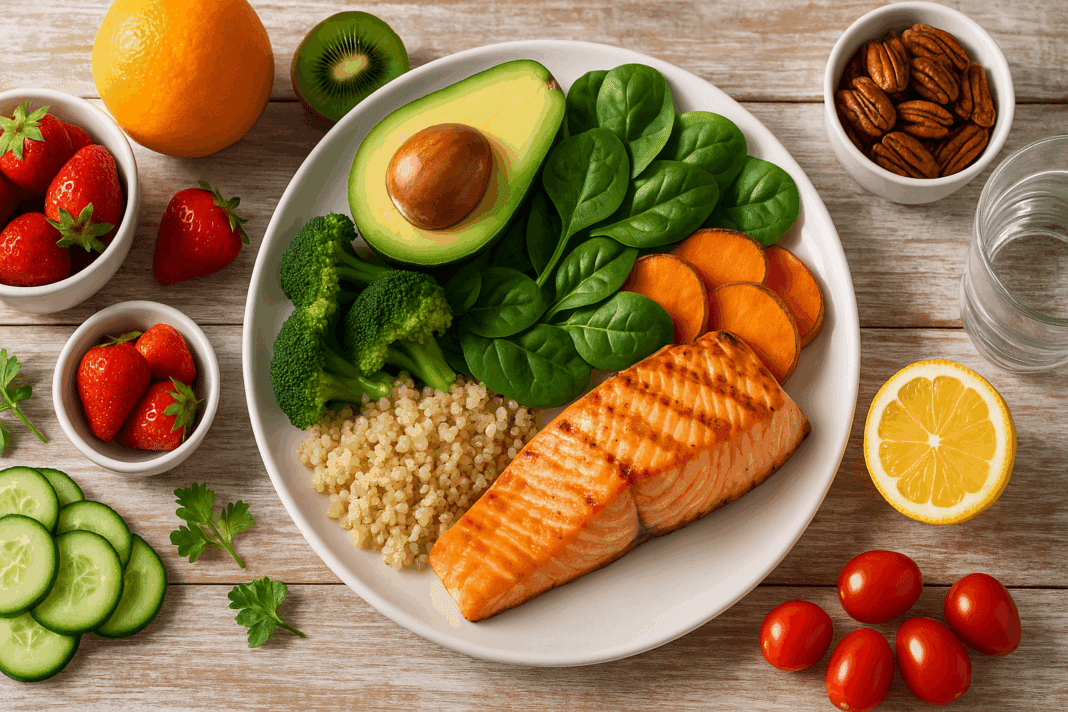Feeling full isn’t just about eating more—it’s about eating smart. Whether you’re trying to manage your weight, stabilize blood sugar, curb emotional eating, or simply improve your daily energy levels, understanding how to stay full longer is an essential part of the equation. This science-backed guide explores what makes foods satisfying, how hunger and satiety signals work, and which healthy filling foods can truly help you feel full longer—without relying on processed, empty-calorie snacks that only offer fleeting satisfaction.
You may also like: Best Foods for Cognitive Function: What Science Reveals About Brain Nourishment, Focus, and Mental Clarity
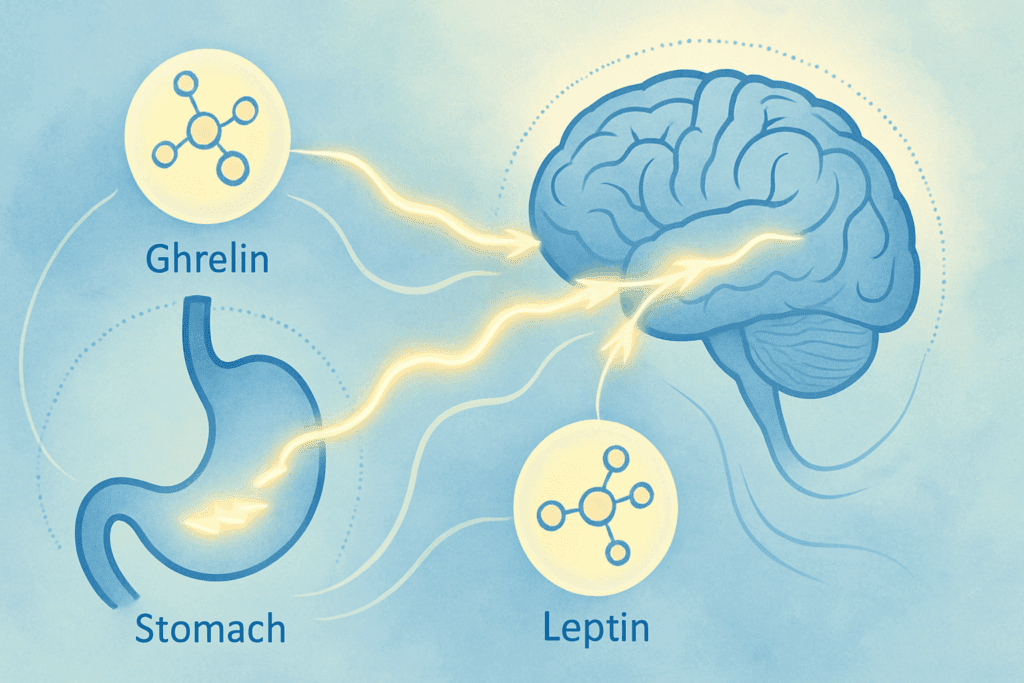
Understanding Hunger and Satiety: The Science Behind Fullness
Before diving into the list of healthy filling foods, it’s important to understand the physiological and neurological processes that determine how full we feel. Hunger and satiety are regulated by a complex interplay between hormones, nutrient receptors, and the brain’s reward system. Key hormones such as ghrelin, known as the hunger hormone, and leptin, which signals fullness, help orchestrate when and how much we eat. Ghrelin rises before meals and falls after eating, while leptin is secreted by fat cells to signal long-term energy sufficiency.
Interestingly, not all foods impact these hormones equally. For instance, highly processed carbohydrates may fill the stomach temporarily but fail to suppress ghrelin or stimulate leptin effectively. In contrast, nutrient-dense foods that contain protein, fiber, and healthy fats interact with satiety hormones more robustly, contributing to a longer-lasting feeling of fullness. This distinction underscores why calories alone don’t determine how full we feel—what those calories consist of matters tremendously. To truly understand how to stay full longer, we must look at the unique ways different food groups influence our biology.
Why Some Foods Keep You Full Longer Than Others
Some foods are very filling not because of how much they weigh or how many calories they contain, but because of how they behave inside your digestive system. Foods that are rich in fiber, for example, slow down digestion and expand in the stomach, helping trigger the stretch receptors that tell your brain you’ve had enough. Proteins, on the other hand, exert a strong effect on satiety hormones and help stabilize blood sugar, which plays a critical role in preventing rebound hunger.
Volume also matters. Foods with high water content, such as fruits, vegetables, and soups, increase the amount of food you can eat without adding excessive calories. This concept, known as “energy density,” refers to how many calories are packed into a given volume of food. Low-energy-dense foods help you feel full with fewer calories, which is especially beneficial if you’re trying to manage weight or reduce overeating. Additionally, texture and chewing time can influence satiety. Crunchy vegetables, whole grains, and other fibrous foods require more chewing, which not only slows eating but also enhances the satiety response through prolonged oral sensory stimulation.
Understanding these mechanisms provides critical insight into what foods keep you full the longest and how to feel full longer without overeating. By focusing on nutrient-rich ingredients that interact favorably with our body’s natural hunger and fullness cues, we can optimize meal planning and snack choices for sustained satisfaction.
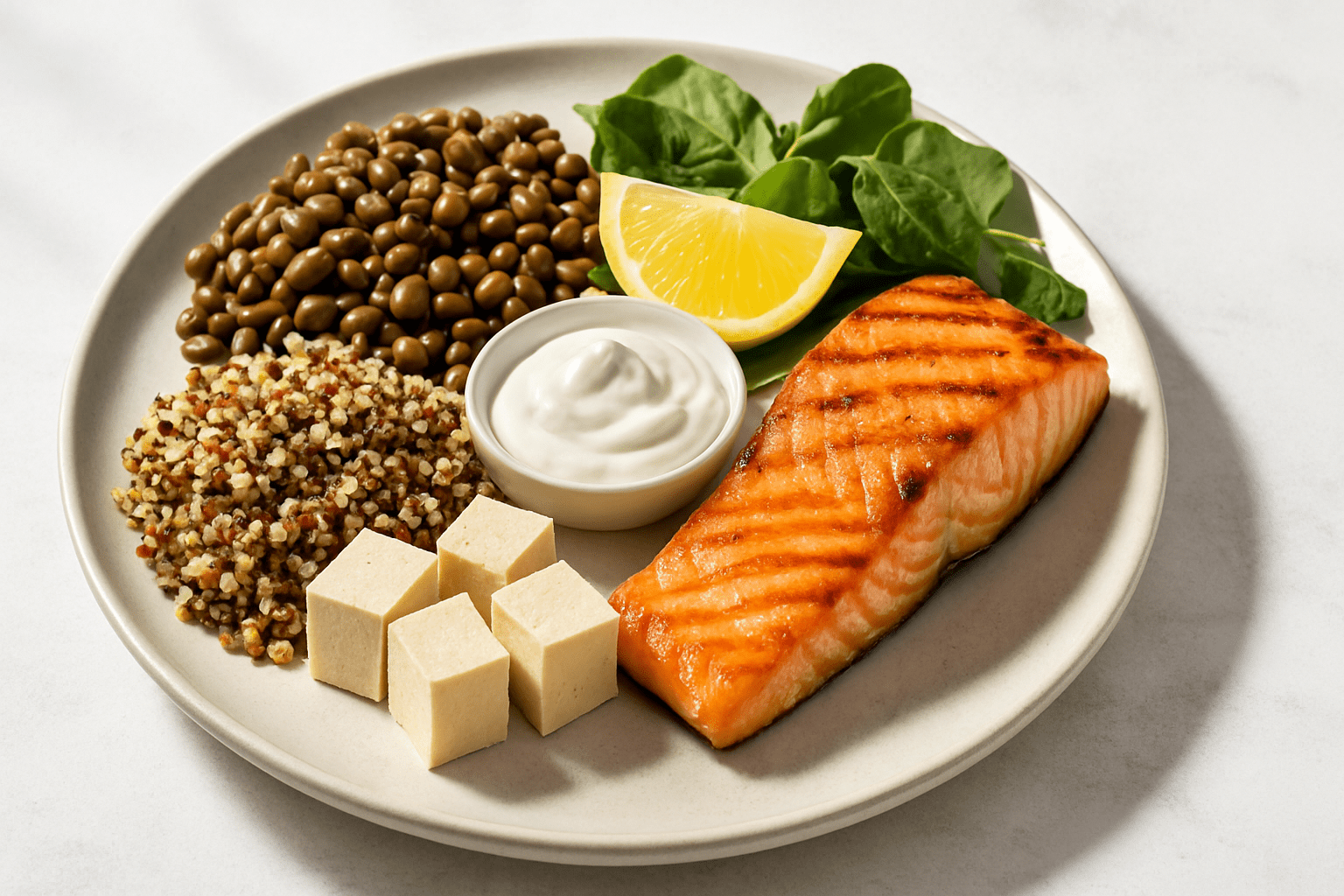
Protein: A Powerful Satiety Signal
Among all macronutrients, protein is often considered the most satiating. Numerous studies have shown that increasing dietary protein can reduce appetite, curb late-night snacking, and promote long-term satiety. This is partly because protein stimulates the release of peptide YY and glucagon-like peptide-1 (GLP-1), hormones that play key roles in hunger suppression. Additionally, protein helps stabilize post-meal blood sugar levels, reducing the risk of sugar crashes that can trigger premature hunger.
Lean meats like chicken, turkey, and fish are classic protein-rich options that rank high among very filling foods. However, plant-based proteins—such as lentils, black beans, quinoa, and tofu—can be just as effective in keeping you full, especially when combined with fiber and healthy fats. Greek yogurt and cottage cheese also provide a concentrated dose of protein and calcium, both of which contribute to metabolic satisfaction.
Including a high-quality protein source in every meal is one of the most practical strategies to stay full longer. For breakfast, consider an omelet with vegetables and feta or a protein-packed smoothie with nut butter and chia seeds. At lunch and dinner, opt for grilled salmon, tempeh stir-fry, or a hearty lentil stew. When it comes to healthy things that fill you up, protein-rich foods top the list both nutritionally and physiologically.
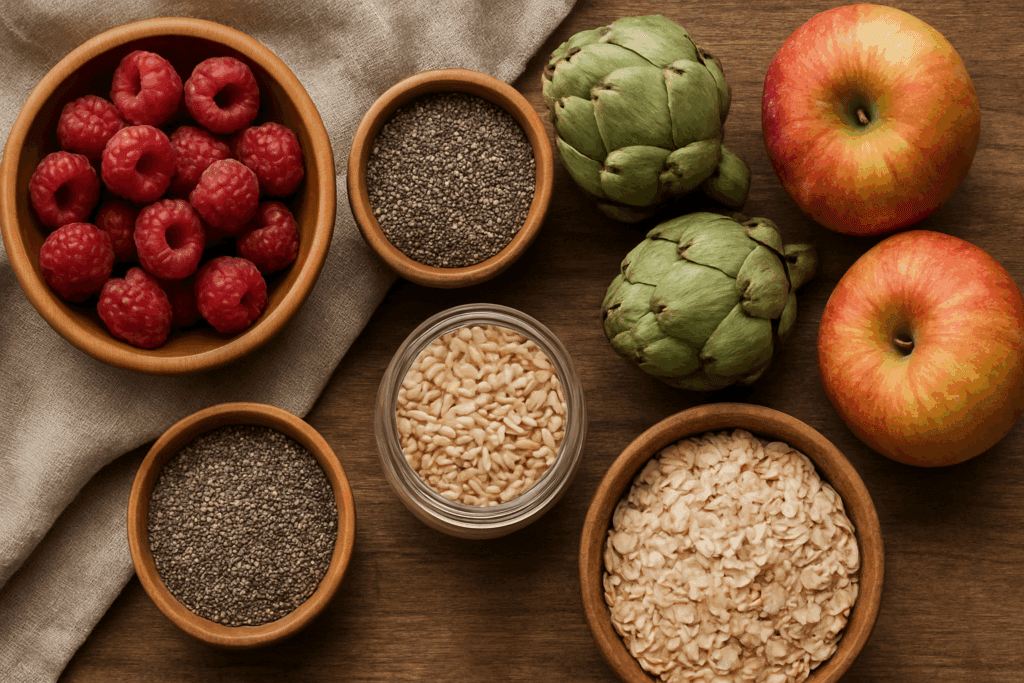
The Fiber Factor: How Plant-Based Foods Make a Difference
Fiber is another key player in the satiety equation. While it doesn’t provide calories or nutrients in the traditional sense, fiber exerts powerful effects on digestion and fullness. Soluble fiber, found in foods like oats, beans, apples, and flaxseeds, forms a gel-like substance in the digestive tract that slows gastric emptying and prolongs nutrient absorption. This extended digestion time leads to a more gradual and sustained release of glucose, reducing insulin spikes and subsequent hunger.
Insoluble fiber, present in whole grains, leafy greens, and many vegetables, adds bulk to the diet and helps food move more slowly through the intestines. This physical volume triggers stretch receptors in the stomach and contributes to mechanical satiety, enhancing the feeling of being full without excessive calories. When looking for foods to eat to make you feel full, fiber-rich options offer a low-calorie way to achieve that satisfying “just-right” fullness.
Foods such as raspberries, chia seeds, artichokes, and barley are examples of nutrient-dense choices that combine high fiber content with additional vitamins, minerals, and antioxidants. A fiber-rich diet has also been linked to a lower risk of chronic disease, improved digestive health, and better weight regulation. For those wondering how to feel full longer without adding empty calories, fiber is an indispensable ally.
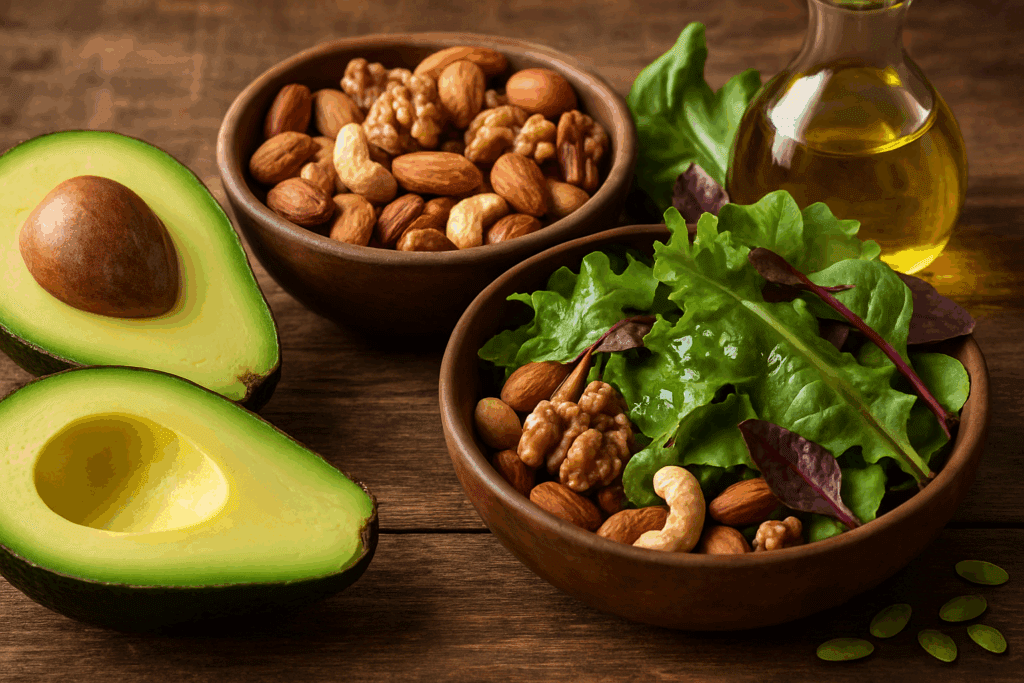
Healthy Fats: Slowing Digestion for Lasting Satisfaction
While fat has long been vilified in the context of diet and weight loss, modern research supports its role in helping people stay full longer—especially when consumed in healthy forms. Unlike carbohydrates, fats digest slowly, creating a steady stream of energy and helping meals “stick to your ribs,” as the saying goes. Healthy fats also enhance the absorption of fat-soluble vitamins (A, D, E, and K), adding nutritional value to meals that might otherwise be less complete.
Avocados, nuts, seeds, and olive oil are excellent sources of heart-healthy monounsaturated and polyunsaturated fats. These foods not only help you feel fuller but also add flavor, texture, and satisfaction to meals. In fact, a well-balanced meal that includes a moderate amount of fat is more likely to be satisfying and less likely to lead to cravings later on. This is a central concept in the discussion of what foods keep you full the longest—fat doesn’t just provide calories; it helps regulate hunger in a meaningful way.
When building meals designed to keep you full, consider pairing healthy fats with protein and fiber-rich foods. A mixed green salad topped with grilled chicken, avocado, and pumpkin seeds offers a trifecta of satiety. A breakfast of steel-cut oats with almond butter and berries delivers a similar effect. Rather than eliminating fat, choosing the right kinds and using them wisely can be a major step toward discovering how to stay full longer throughout the day.
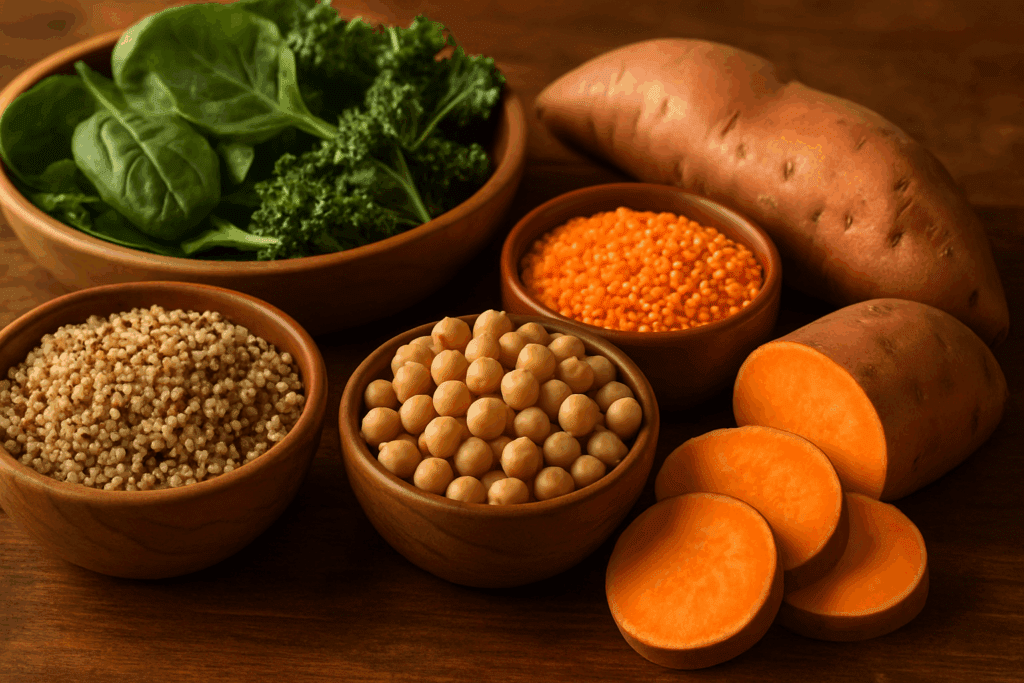
Low-Glycemic Carbohydrates: Sustained Energy Without Crashes
Carbohydrates are often blamed for hunger and energy crashes, but not all carbs are created equal. Low-glycemic carbohydrates—those that are digested slowly and cause a gradual rise in blood sugar—can help regulate appetite and energy levels far more effectively than their high-glycemic counterparts. Whole grains, legumes, vegetables, and some fruits offer complex carbohydrates along with fiber, phytonutrients, and antioxidants.
Choosing these types of carbohydrates allows the body to maintain steady blood glucose levels, which is crucial for preventing hypoglycemia-driven hunger that can emerge shortly after a meal. Foods that make you feel full in a sustainable way tend to be those that avoid triggering sharp insulin spikes, which are commonly seen with white bread, sugary cereals, or refined snacks. Replacing processed carbs with low-glycemic options is a powerful move for anyone seeking to learn how to feel full longer and reduce cravings between meals.
Quinoa, sweet potatoes, bulgur, lentils, and chickpeas are standout examples of healthy filling foods that provide lasting fuel without the highs and lows associated with simple sugars. Incorporating these into everyday meals, such as a lentil and vegetable curry or a grain bowl with roasted sweet potatoes and hummus, can help stabilize hunger hormones while delivering a satisfying dining experience.
Hydration and Volume: The Role of Water-Rich Foods
Water plays a surprisingly crucial role in satiety. Not only does hydration support optimal digestion and metabolic function, but water-rich foods also add bulk to meals without adding calories. This volume-based strategy allows you to eat more food while consuming fewer calories—a concept known as “volumetrics.”
Foods like cucumbers, oranges, watermelon, lettuce, zucchini, and broth-based soups provide a satisfying sense of fullness due to their high water content. They fill the stomach, stimulate stretch receptors, and create the illusion of a larger meal, all without contributing to caloric overload. For individuals looking for foods that help you feel full while managing calorie intake, water-dense fruits and vegetables are some of the healthiest options available.
Drinking water before meals can also amplify the satiety effect. Studies have shown that individuals who consume water before eating may naturally reduce calorie intake and feel fuller faster. In this way, learning how to stay full longer isn’t always about adding more food—it’s sometimes about adding the right kind of water-rich food or liquid before or with your meals.
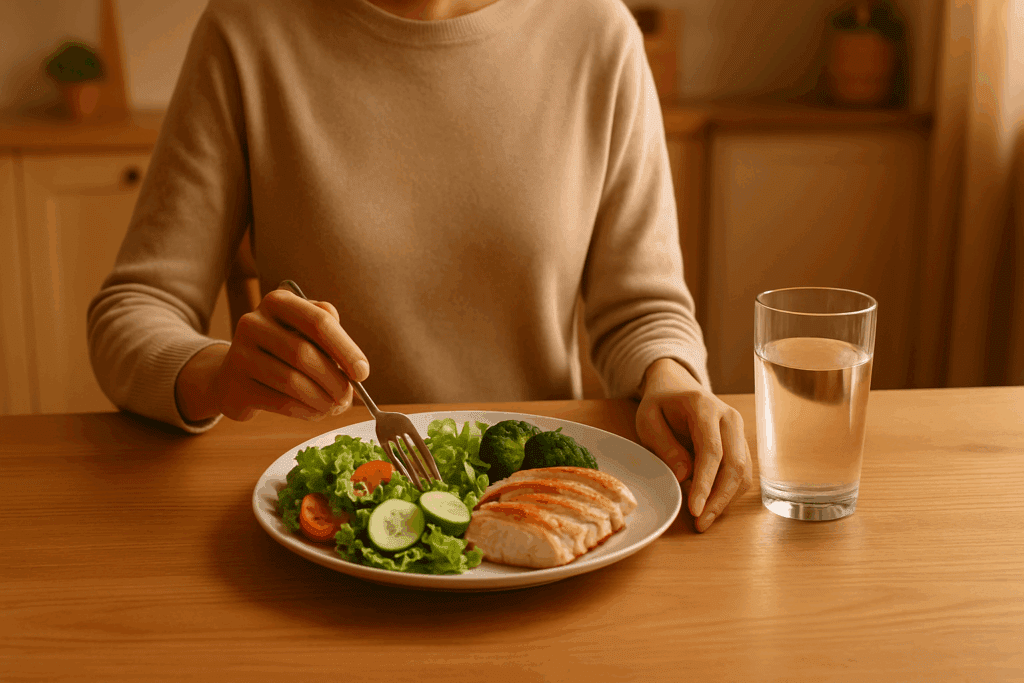
The Psychology of Satiety: Mindful Eating and Meal Timing
Even the most nutrient-dense foods may not keep you full if you eat them in a distracted, rushed, or irregular manner. The psychology of eating plays a major role in how full you feel. Slowing down during meals, chewing thoroughly, and paying attention to hunger and fullness cues can significantly influence your level of satiety. This practice, known as mindful eating, allows the body and brain to synchronize, giving satiety signals enough time to register.
Meal timing also impacts how full you feel throughout the day. Skipping meals or eating erratically can disrupt hunger hormones and lead to intense hunger later, which often results in overeating or choosing less nutritious foods. Consistent meal patterns that include healthy things that fill you up—such as a balanced breakfast or fiber- and protein-rich snacks—support metabolic stability and help reduce overall calorie intake.
For those wondering how to feel full longer between meals, developing consistent eating habits and cultivating awareness around the act of eating can be just as important as choosing the right foods. Combining nutrient-dense ingredients with intentional mealtime practices creates a synergistic effect that promotes lasting satiety and improved metabolic health.
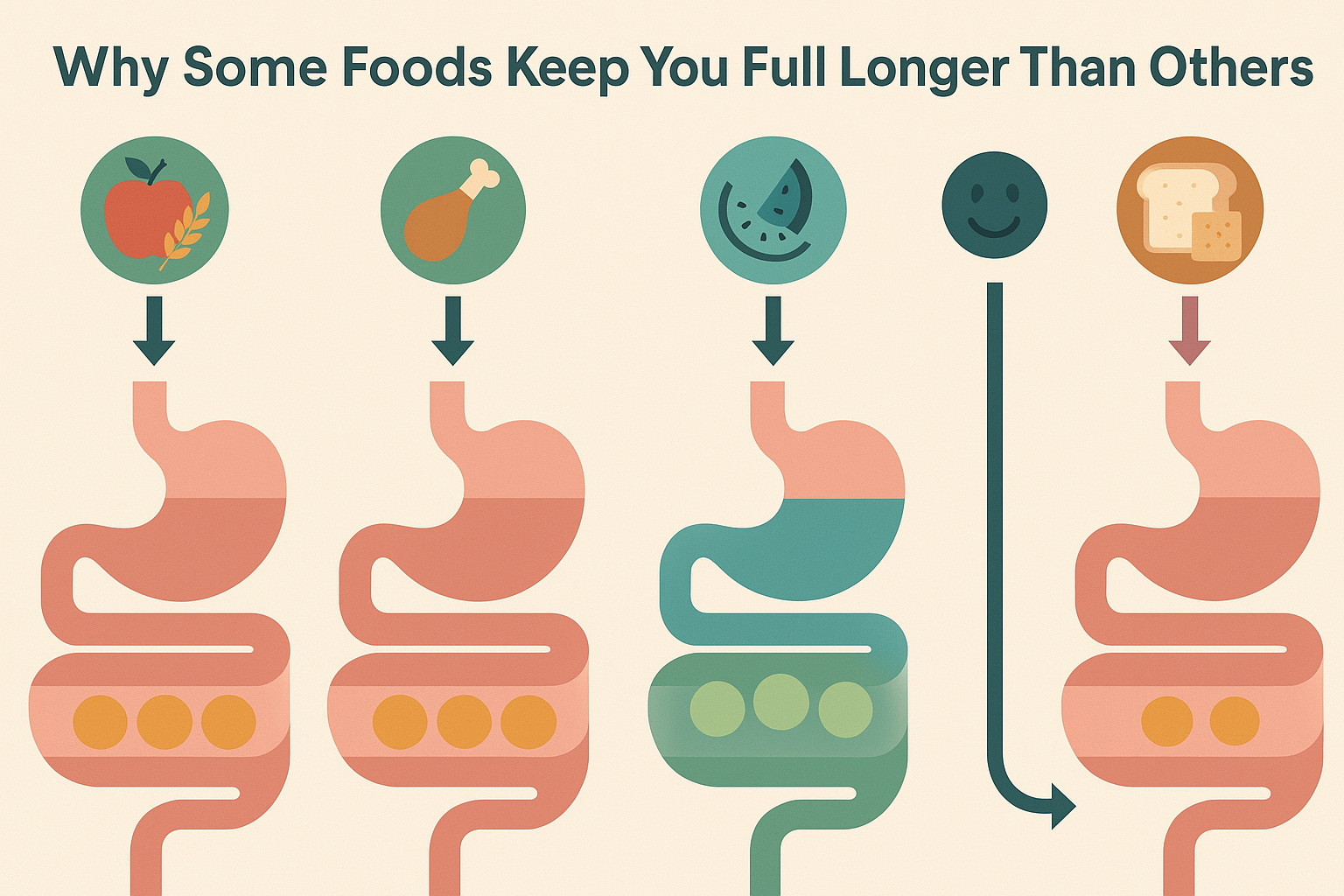
Practical Meal Strategies to Stay Full Throughout the Day
Putting theory into practice involves more than just knowing which foods are best—it’s about creating meals and snacks that work with your lifestyle. Breakfast might include eggs with spinach and whole grain toast, or Greek yogurt with chia seeds and berries. Lunch could feature a quinoa salad with beans, avocado, and roasted vegetables. Dinner may consist of baked salmon, lentils, and steamed broccoli. Snacks could include a handful of almonds, hummus with carrots, or cottage cheese with pear slices.
Planning meals around foods that fill u up helps ensure that you’re not reaching for ultra-processed snacks between meals. While no single food holds the key to fullness, combining protein, fiber, healthy fats, and hydration in each meal offers the most effective formula for how to stay full longer without overloading on calories.
FAQ: Foods That Keep You Full
1. What are some healthy filling foods that can help with weight management?
Healthy filling foods play an essential role in weight management. These foods not only provide necessary nutrients but also help you feel full longer, reducing the urge to snack between meals. Some healthy filling foods include high-fiber vegetables like spinach and broccoli, lean proteins such as chicken and tofu, and whole grains like quinoa and oats. These foods that make you feel full work by slowing digestion and promoting satiety. Incorporating them into your meals can help you manage portion sizes and prevent overeating. For example, the fiber in vegetables and whole grains absorbs water, expanding in your stomach and making you feel fuller for a longer period of time.
2. How can I feel full for longer during the day?
To feel full longer throughout the day, focus on incorporating a balanced mix of macronutrients—protein, healthy fats, and fiber. Foods that help you feel full, such as avocados, nuts, and eggs, are rich in healthy fats and proteins that slow digestion. Pairing these with fiber-rich foods like beans, fruits, and vegetables can enhance satiety, making it easier to stay full for longer periods. For instance, adding a handful of almonds to a salad not only provides crunch but also helps stabilize blood sugar levels, preventing hunger pangs. Including very filling foods like oats or whole wheat bread can further support your efforts to stay full longer, as they require more time to digest.
3. What are the benefits of eating foods to eat to make you feel full?
Eating foods to make you feel full can significantly improve your overall diet and lifestyle. By incorporating healthy filling foods that are high in fiber and protein, you can curb your cravings and avoid overeating. This leads to better weight management and improved digestion. When you focus on foods that keep you full, you’re less likely to experience energy crashes throughout the day, which are often triggered by low blood sugar levels. For example, having a hearty breakfast of eggs and whole-grain toast can keep you satisfied until lunch, reducing the temptation for unhealthy snacks.
4. How do high-fiber foods keep you full for longer?
High-fiber foods are known for their ability to keep you feeling full. Fiber absorbs water in the digestive system, expanding and slowing down digestion. This means that meals rich in fiber help you feel full and satisfied long after you’ve eaten. Foods that fill you up like vegetables, fruits, and whole grains are especially beneficial for weight management. Additionally, fiber stabilizes blood sugar levels, preventing sudden hunger spikes. Eating fiber-rich snacks like an apple with peanut butter or a bowl of oats can make a significant difference in how long you feel satisfied between meals.
5. Can healthy things that fill you up help with reducing late-night snacking?
Yes, incorporating healthy things that fill you up can be an effective strategy to avoid late-night snacking. Foods such as lean proteins, nuts, and fibrous vegetables take longer to digest, keeping you satisfied well into the evening. When you consume foods that make you feel full before bedtime, you’re less likely to reach for high-calorie snacks. A bowl of quinoa paired with vegetables or a slice of avocado on whole-grain toast can be particularly helpful in curbing hunger at night. These foods help you feel full and reduce the cravings that often lead to unhealthy late-night eating habits.
6. What makes you feel full during a meal, and why does it last?
Foods that keep you full during a meal generally contain a mix of fiber, protein, and healthy fats. These macronutrients slow the emptying of your stomach, making you feel full for longer. For example, eating a meal rich in healthy filling foods like salmon, quinoa, and spinach not only fills you up but also ensures that the feeling of fullness lasts. Protein-rich foods are particularly effective at suppressing hunger by regulating hormones like ghrelin, which is responsible for stimulating appetite. Additionally, foods high in fiber help prolong the digestion process, making it easier to stay full until your next meal.
7. How can I feel full without overeating or consuming too many calories?
To feel full without overeating, focus on foods that fill you up without adding excessive calories. Low-calorie-density foods like leafy greens, cucumbers, and carrots provide bulk without significantly increasing your calorie intake. Pairing these with lean proteins like chicken breast or plant-based alternatives can offer the right balance of nutrients and satiety. Another effective strategy is to focus on portion control by consuming foods that make you feel full quickly, such as a salad loaded with vegetables and topped with a small serving of olive oil for healthy fats. This combination will keep you satisfied without going overboard on calories.
8. What are some foods to stay away from if I want to feel full for longer?
To stay full for longer, it’s important to avoid foods that spike your blood sugar and leave you feeling hungry soon after eating. Refined carbs and sugary snacks like pastries, white bread, and soda are known to cause rapid blood sugar fluctuations, leading to hunger pangs shortly after consumption. Instead, opt for whole foods and complex carbohydrates, which take longer to digest and help maintain stable energy levels. By avoiding foods that do not keep you full, such as sugary breakfast cereals or processed snacks, you can focus on more satisfying meals that last longer and contribute to better health.
9. What is the best way to combine foods to make sure I feel full all day?
Combining foods that help you feel full with a balanced mix of fiber, protein, and healthy fats is key to staying satisfied throughout the day. A good example of this would be a breakfast that includes both protein and fiber, such as Greek yogurt with chia seeds and berries. This combination ensures that you start the day with foods that fill you up, providing the necessary nutrients to stay energized. To keep feeling full throughout the day, pair foods like lean meats or tofu with fibrous vegetables and whole grains. A quinoa salad with chickpeas, spinach, and a drizzle of olive oil is another great example of a balanced meal that promotes lasting fullness.
10. How do specific meals help with how to feel full longer?
Certain meals, particularly those that are rich in fiber, protein, and healthy fats, can help you feel full longer by slowing down the digestive process. A hearty meal like a chickpea and vegetable stew, for example, is packed with fiber and protein that not only provides long-lasting fullness but also helps maintain stable blood sugar levels. By incorporating filling foods such as avocado, eggs, and beans into your meals, you ensure that your stomach remains satisfied for an extended period. These foods keep you full by contributing to satiety signals in your body, allowing you to feel more in control of your appetite throughout the day. Additionally, consuming a meal with a combination of foods that keep you full, such as a mixed vegetable stir-fry with quinoa and a boiled egg, can further promote fullness and prevent unnecessary snacking.
Conclusion: Unlocking Long-Lasting Fullness Through Smart, Satisfying Nutrition
Discovering how to stay full longer doesn’t require extreme dieting, expensive supplements, or cutting out entire food groups. It hinges on understanding the science of satiety, recognizing the value of nutrient-rich foods, and creating balanced meals that work with your body’s natural hunger signals. The best healthy filling foods are those that combine fiber, protein, and healthy fats with volume and low energy density, promoting fullness without unnecessary calories.
Incorporating foods that make you feel full—such as lentils, eggs, avocados, oatmeal, and berries—into your daily routine can radically improve not just your hunger levels, but your overall health, energy, and eating satisfaction. When you focus on foods that keep you full and learn what makes you feel full beyond the temporary effects of sugar or starch, you’re investing in long-term wellness.
From breakfast through dinner and every snack in between, choosing healthy things that fill you up transforms the way you eat—and feel. Ultimately, the power to control your appetite and stay full longer comes not from restriction, but from nourishment that supports both mind and body.
whole grain meals, high satiety nutrition, gut-brain connection, low calorie high volume foods, mindful eating tips, leptin and ghrelin regulation, protein-rich snacks, soluble vs insoluble fiber, complex carbohydrate benefits, anti-inflammatory diet tips, slow digestion foods, hydration and appetite, nutrient-dense breakfast ideas, plant-based satiety, metabolic health eating plan, meal timing strategies, healthy weight maintenance foods, insulin-friendly eating, satiety hormones and fullness, digestive-friendly meals
Further Reading:
Weight loss: Feel full on fewer calories
Disclaimer: The content published on Better Nutrition News (https://betternutritionnews.com) is for informational and educational purposes only. It is not intended as a substitute for professional medical advice, diagnosis, or treatment. Always seek the guidance of a qualified healthcare professional before making any changes to your diet, nutrition, or wellness practices. The opinions expressed by authors and contributors are their own and do not necessarily reflect those of Better Nutrition News.
Better Nutrition News and its affiliates make no representations or warranties regarding the accuracy, completeness, or reliability of the information provided. We disclaim all liability for any loss, injury, or damage resulting from the use or reliance on the content published on this site. External links are provided for reference purposes only and do not imply endorsement.


